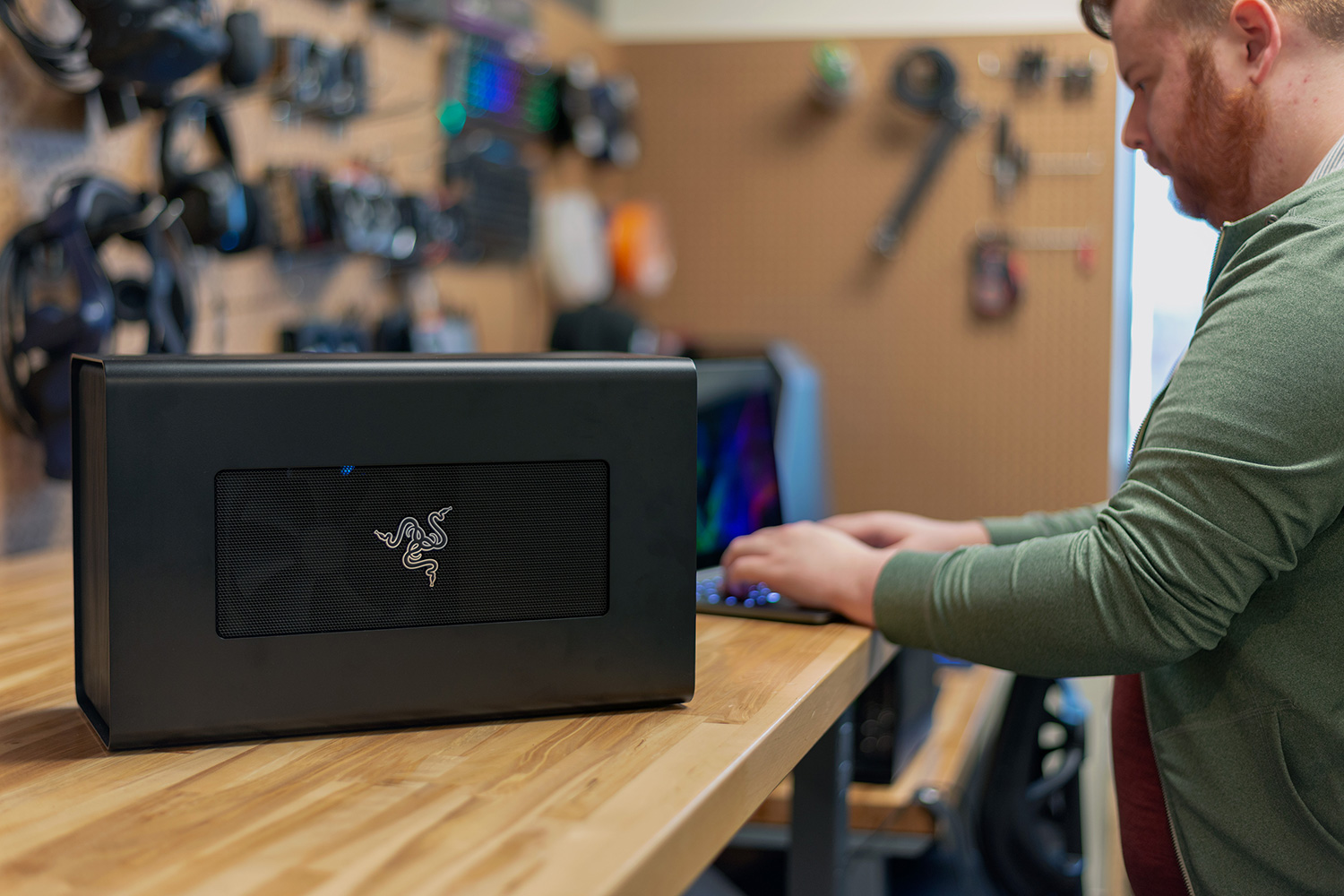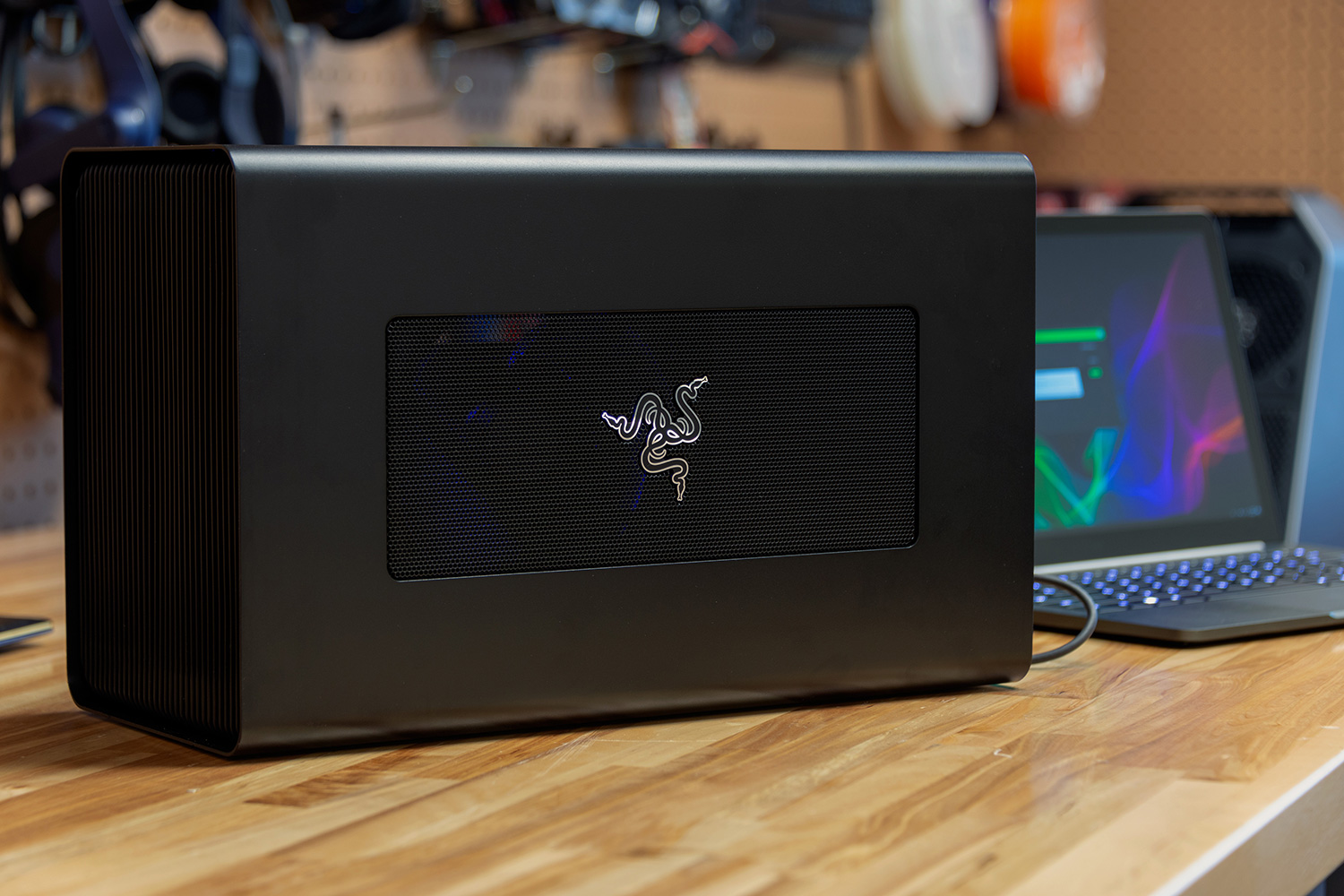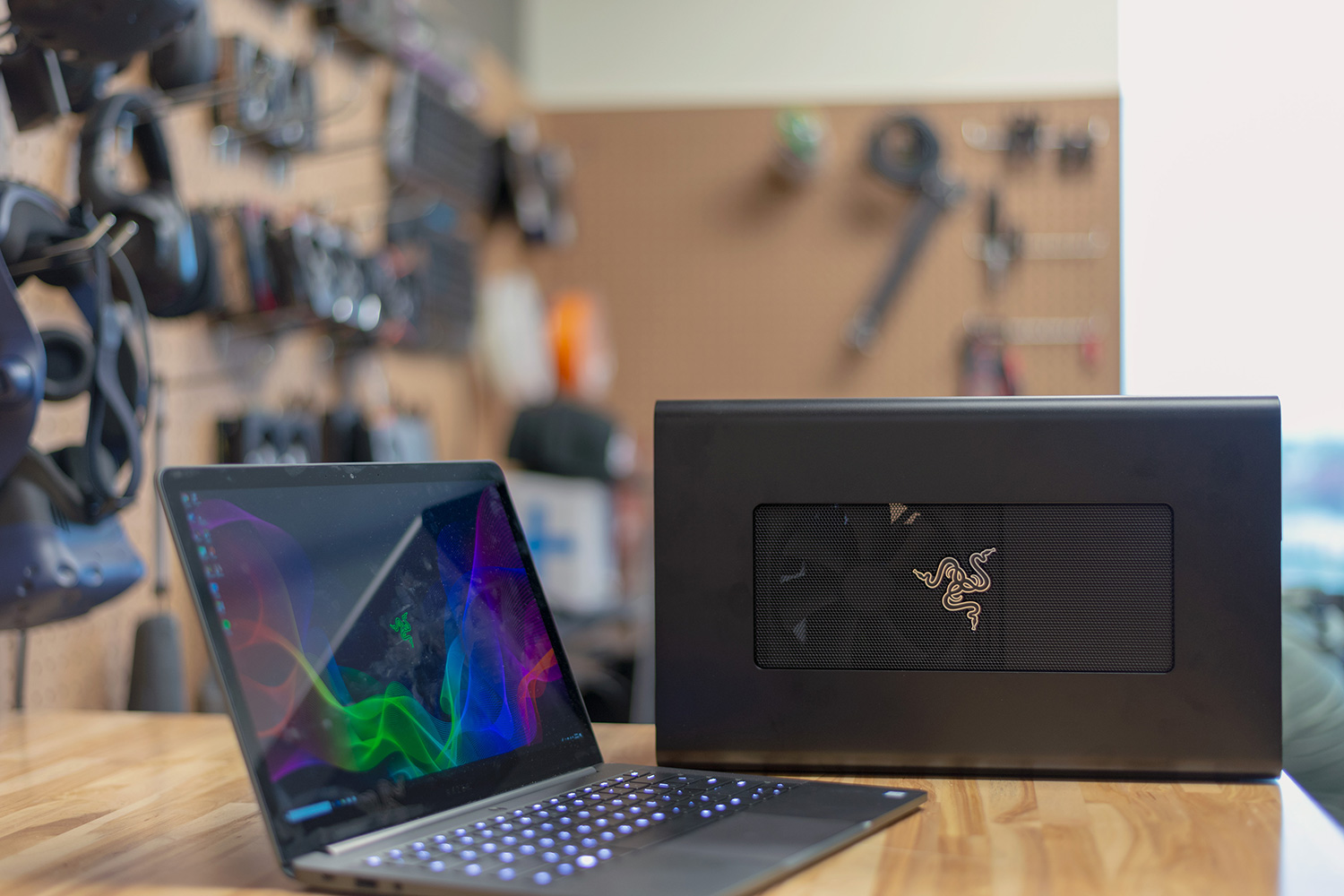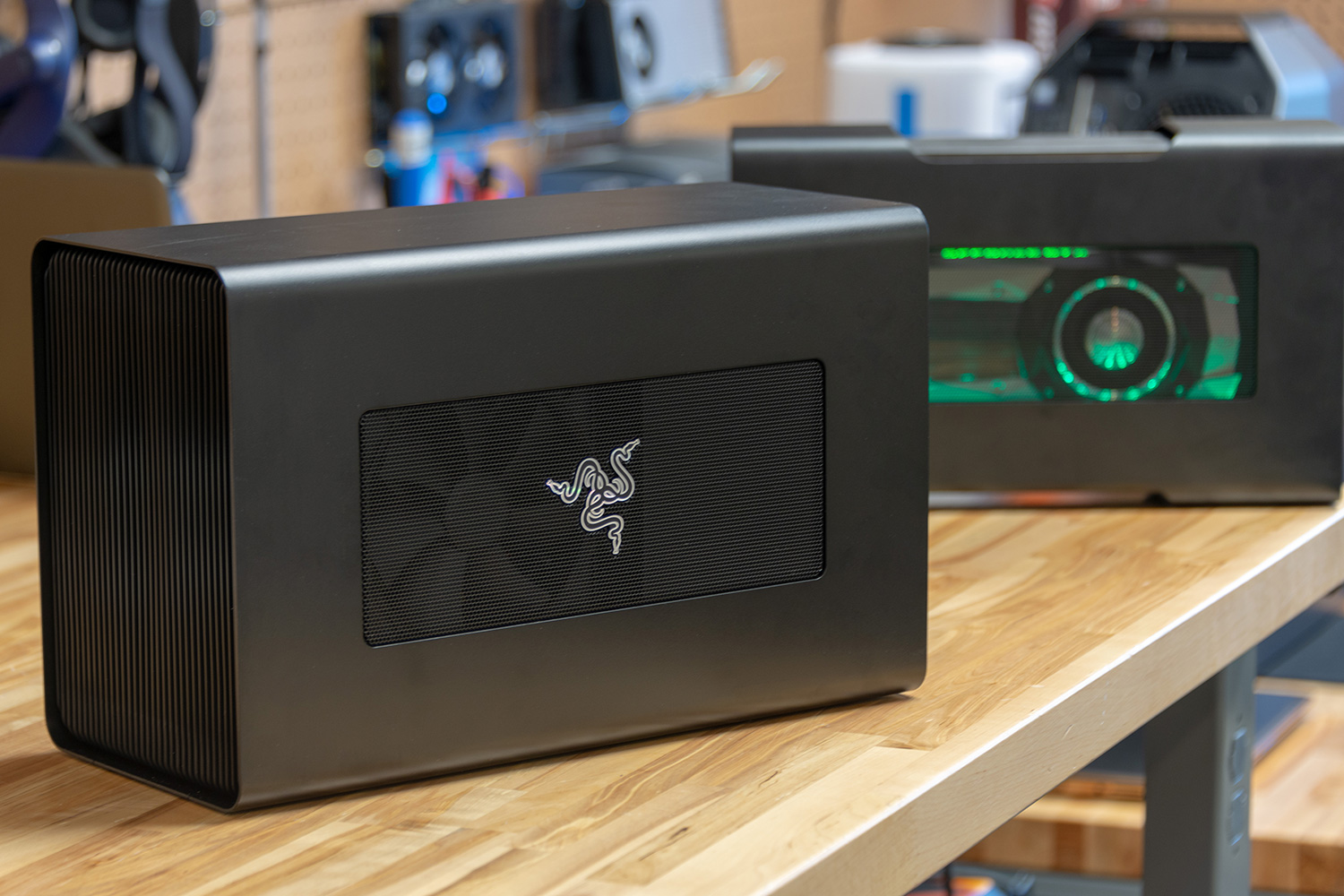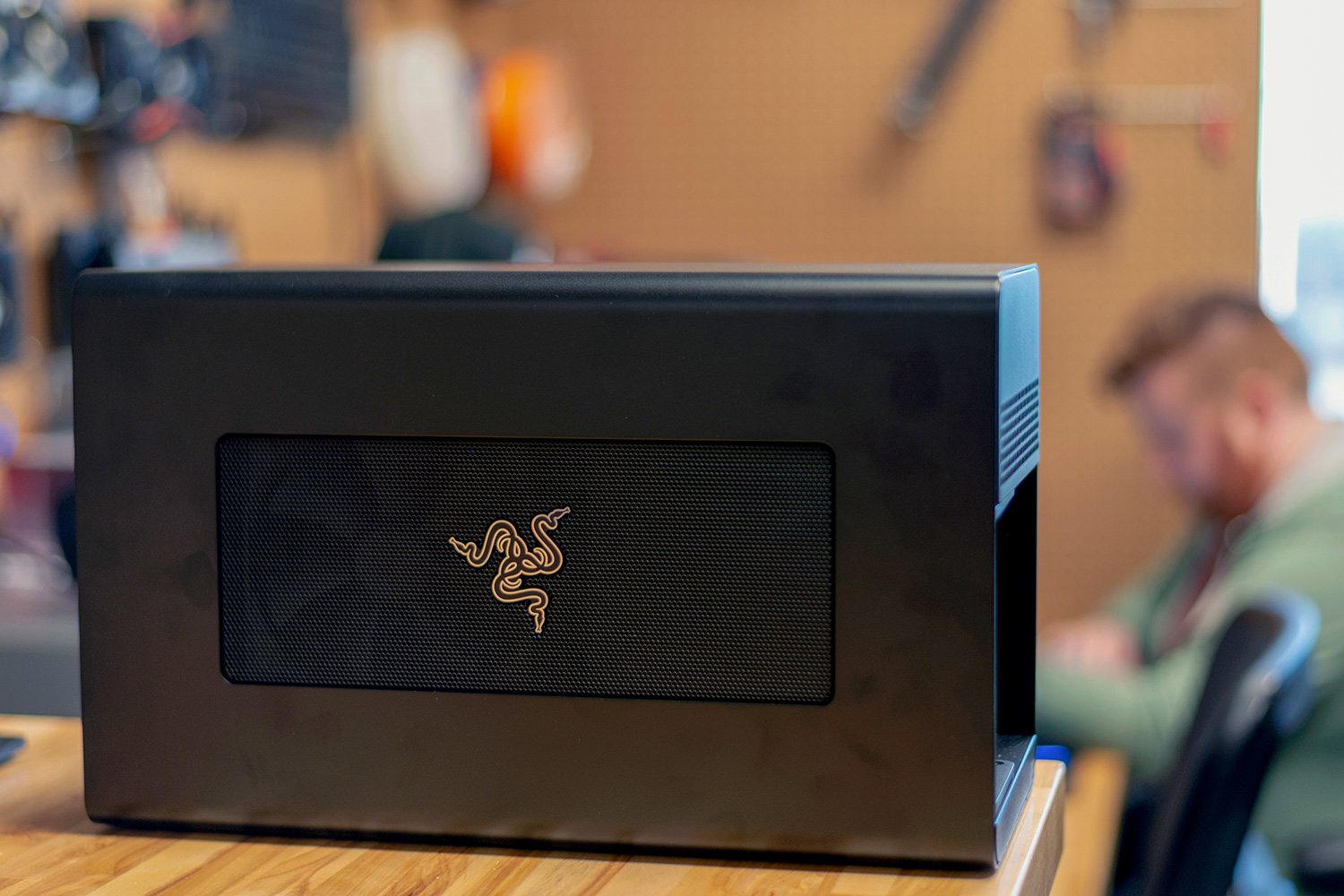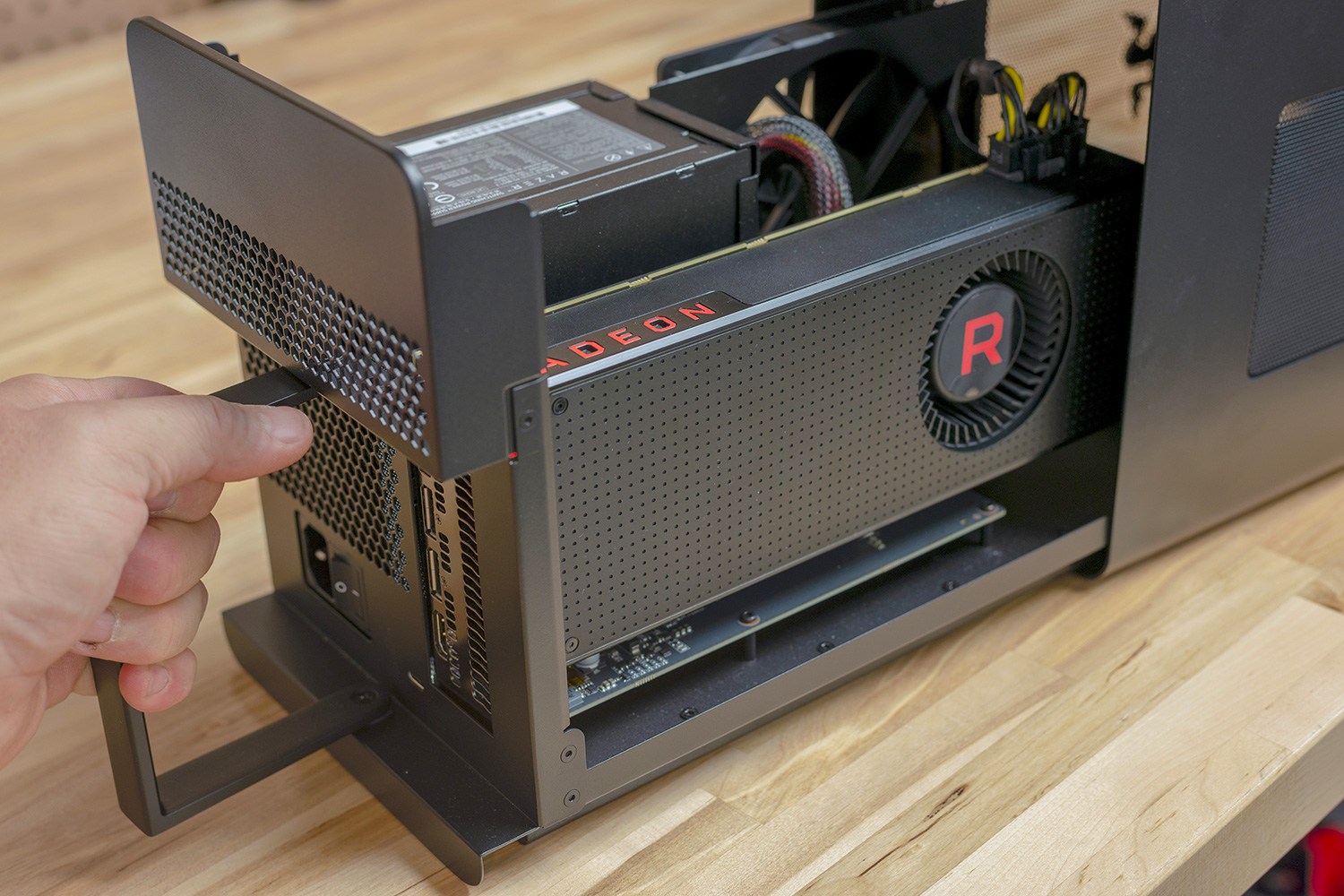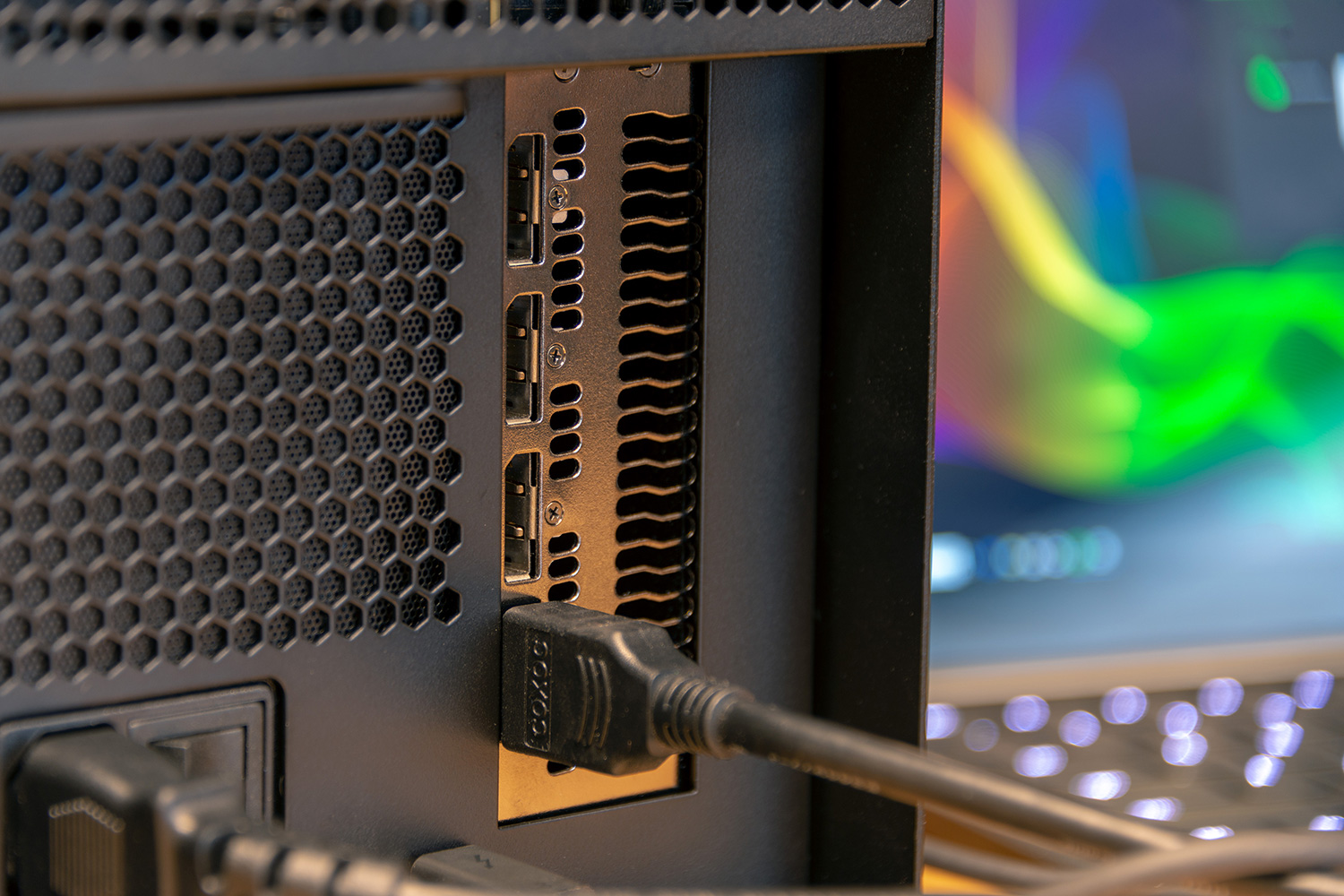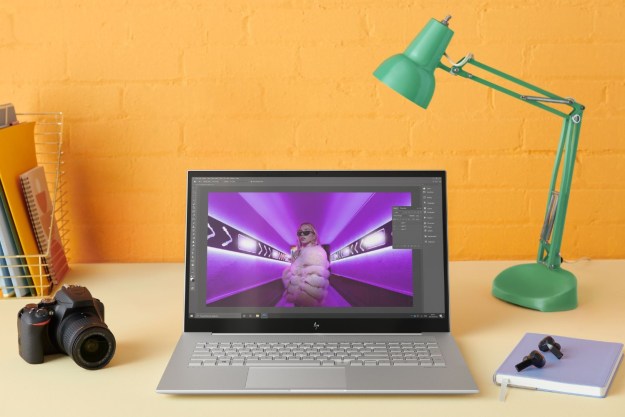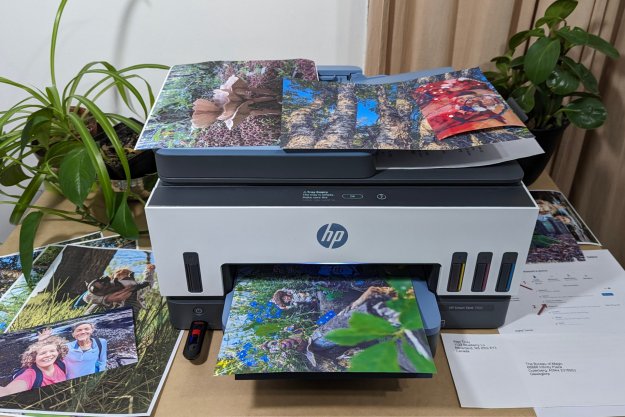PC gamers have a lot of computers to manage.
If you own a high-powered gaming rig at home, it’s probably not your only computer. If you’re like most people, you also have a thinner, lighter laptop for work or just to be mobile around the house. If you opted for a gaming laptop, it’s even worse. They’re so bulky they’re essentially dedicated gaming machines. You can’t take them to work with you, and you’ll definitely feel out of place at your local coffee shop.
But Razer has another solution — two, actually. The Razer Core V2 and Core X are external GPUs, and they presents a pretty compelling argument for why dedicated gaming PCs should be a thing of the past.
The plug-and-play magic is for real
“What’s that thing?” was the reaction I often got as coworkers walked by the ubiquitous black box on my office desk. Calling it an “external GPU” sucked the excitement out of the conversations pretty quickly, but judging by looks alone, it’s hard not to stare. Both the Core V2 and Core X are super sleek, covered in an all-black paint job and machined aluminum. It’s a look that could easily pass for a compact PC or gaming console. The Core V2’s side window gives you a look at the GPU lit up by Chroma lights, while the back opens up access to some USB-A ports and ethernet jack. The X lacks the Chroma lights and added ports, making the V2 a more premium package.
External GPUs aren’t new, but in the past they’ve felt like you were hacking your laptop. With Razer’s Core, all the connections and software are enabled through Thunderbolt 3. With more and more modern laptops supporting this new standard, the dream of a plug-and-play external GPU is finally possible.
Plug it in with one cord, and watch as your dainty, three-pound laptop transforms into a desktop-class, gaming behemoth. One minute we were struggling to hit 30 FPS in Rocket League on Medium settings in 1080p — and without even restarting the game, we were up to 83 FPS at Ultra in 4K.
The dream of a plug-and-play external GPU is finally possible.
At its basics, both Razer Cores are just a PCIe bridge in an enclosure. It’s not sold with a graphics card or any other components — that’ll all need to be powered by what’s in your laptop. What this allows is an entire system set up and ready to go — your monitor, peripherals, and even hard-wired internet connection — all connected through a small Thunderbolt 3 cable. This is when the convenience of plug-and-play really pay off.
Installing a GPU into the Core is just as easy. It’s completely tool-less — just pull the handle out to unlock it, undo a thumb screw, and slide out the tray for your GPU. We loaded ours up with the Nvidia GTX GeForce 1080 and connected it to the 2018 Razer Stealth Blade for performance tests.
Plenty of grunt for demanding games
Along with the 8th-gen Core i7-8550U processor, the Razer Stealth Blade also includes 16GB of RAM. The result is some of the best gaming performance you can achieve on a laptop. Even dedicated
We also dusted off an older laptop to see how it’d handle the Core — the Asus ZenBook 3 Deluxe with a 7th-gen CPU. It ended up being a serious headache. The system had a difficult time updating graphics drivers and switching between the Intel graphics card and the Core. We ultimately got it to work in Civilization VI, but others games wouldn’t recognize it. A fresh install of Windows probably would have done the trick, but it’s something to keep in mind if you’re using an older PC.
You’ll never achieve the speed you’d gain from plugging a graphics card directly in your motherboard.
Lastly, we plugged it into a spiffy 4K Dell XPS 13. As a newer laptop, it was easy to get the Core up and running. Once it was, the plug-and-play experience felt as seamless as it did on the Razer Blade Stealth. As you can see in the chart above, the XPS 13 saddled up on both the Core V2 and Core X and rode off into the sunset. The XPS 13 actually handled the Core even better than the Blade. It ran cooler, and hit slightly higher framerates. Even in
That said, a Core setups appears to be a solid twenty or thirty percent behind the gaming performance you’d score in a conventional desktop station. You’ll never achieve the speed you’d gain from plugging a graphics card directly in your motherboard. The performance drop is worse if you’re using the laptop’s own display rather than an external monitor. No matter how you slice it, you won’t be squeezing the most performance out of that high-priced GPU you bought, and that’ll be hard to justify for some people.
Is it worth it?
The Razer Core V2 runs for $500 alone, and that’s not including the $350-600 a decent GPU will cost you. If you were also picking up a new laptop, let’s say the $1,400 Razer Blade Stealth, you’re looking at spending close to $2,500 for the full package.
You’ll save a couple hundred bucks for the Razer Core X, which is more affordable at $300. Unless you can’t survive without Chroma lights and ports for peripherals, we recommend the Core X over the other. Although it’s larger, the extra space allows for a larger internal fan, a bigger 500W power supply, and a three-slot graphics card. Performance between the Core X and V2 is identical, as well.
It’s a lot of money, to be sure. But if you add up what you’ll pay for two separate systems — never mind the inconvenience of switching back and forth — it’s in the same ballpark. Any combination of a decent gaming laptop and a somewhat thin-and-light laptop is going to put you at a very similar price point.
All of a sudden, spending $2,000 on gaming laptop that can’t be upgraded seems like the bigger waste of money.
But what do you receive in exchange? First, the convenience of the single-computer experience. No dedicated work and
With a setup like the Razer Core, you can be confident you won’t have to replace your entire system when a new generation of Nvidia cards are released. All of a sudden, spending $2,000 on gaming laptop that can’t be upgraded seems like the bigger waste of money. The Razer Core probably won’t convince diehard desktop gamers to sell their systems. The performance drop is too big for that. But for those who want the flexibility of a single-computer setup, the Core is just what we’ve been waiting for.
Editors' Recommendations
- AMD’s defenses against Spectre V2 may be inadequate
- Razer launches the Kraken V3 X, a new $70 gaming headset
- Razer’s new $50 Firefly V2 mouse mat lights up your desk in a rainbow of color
